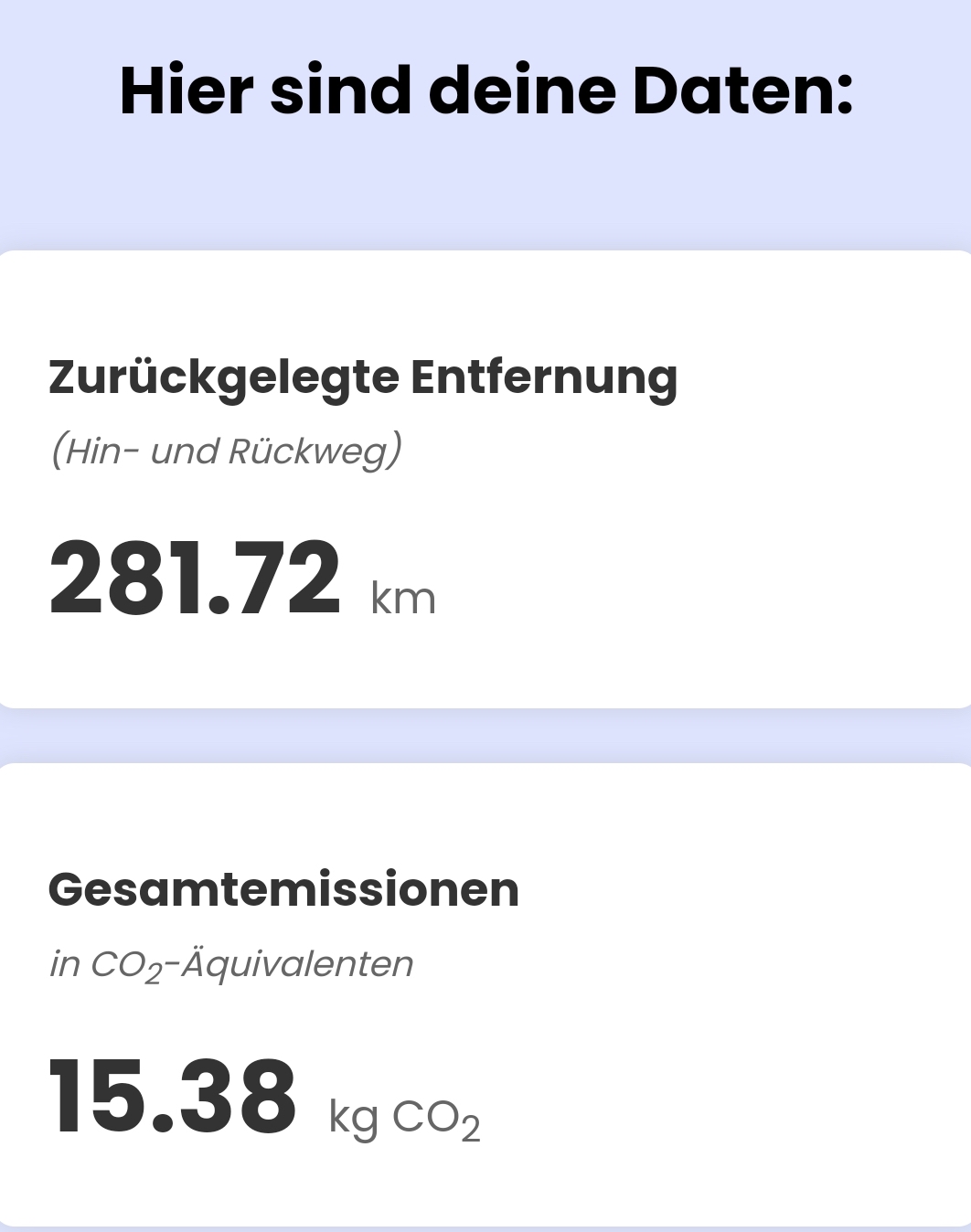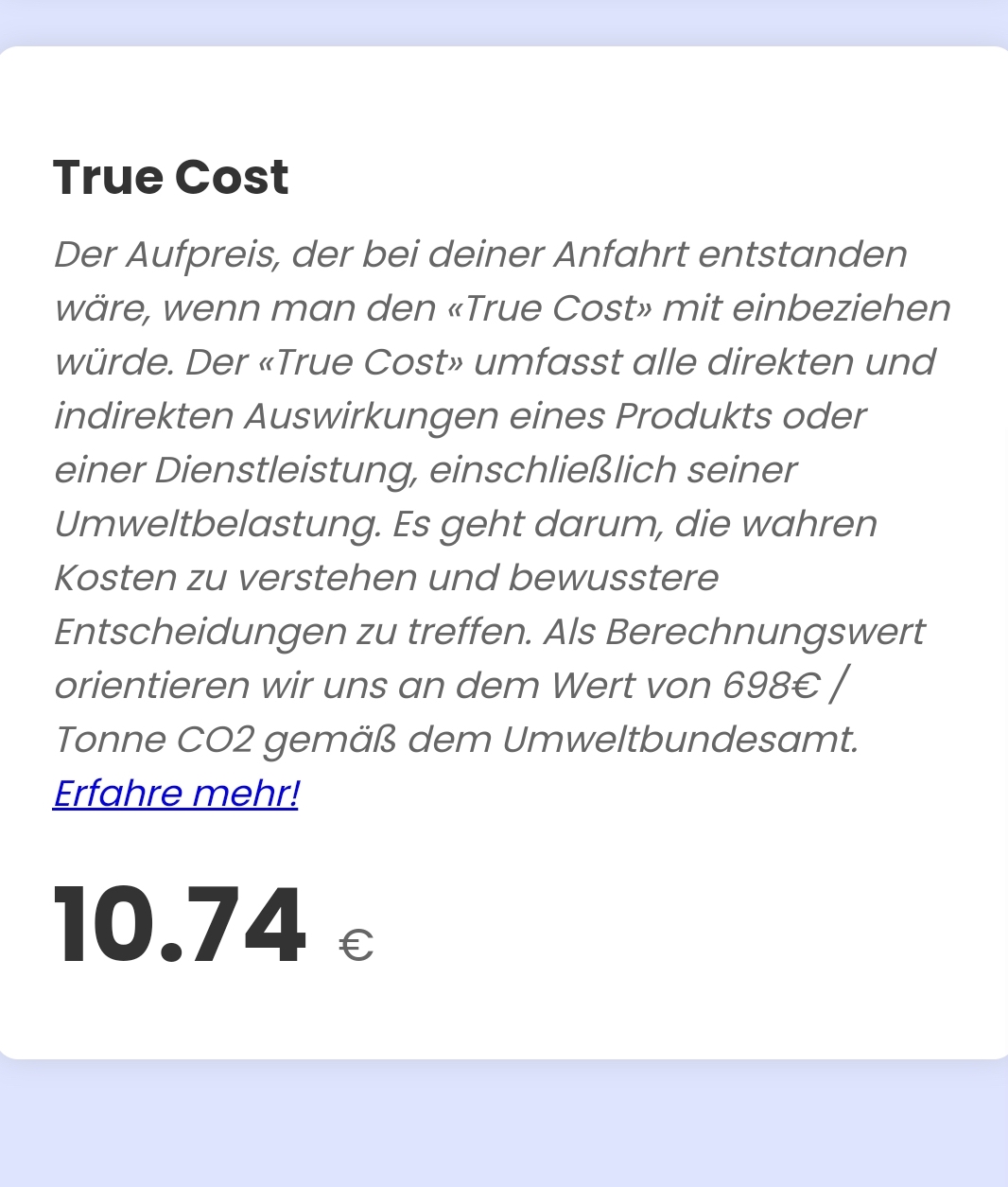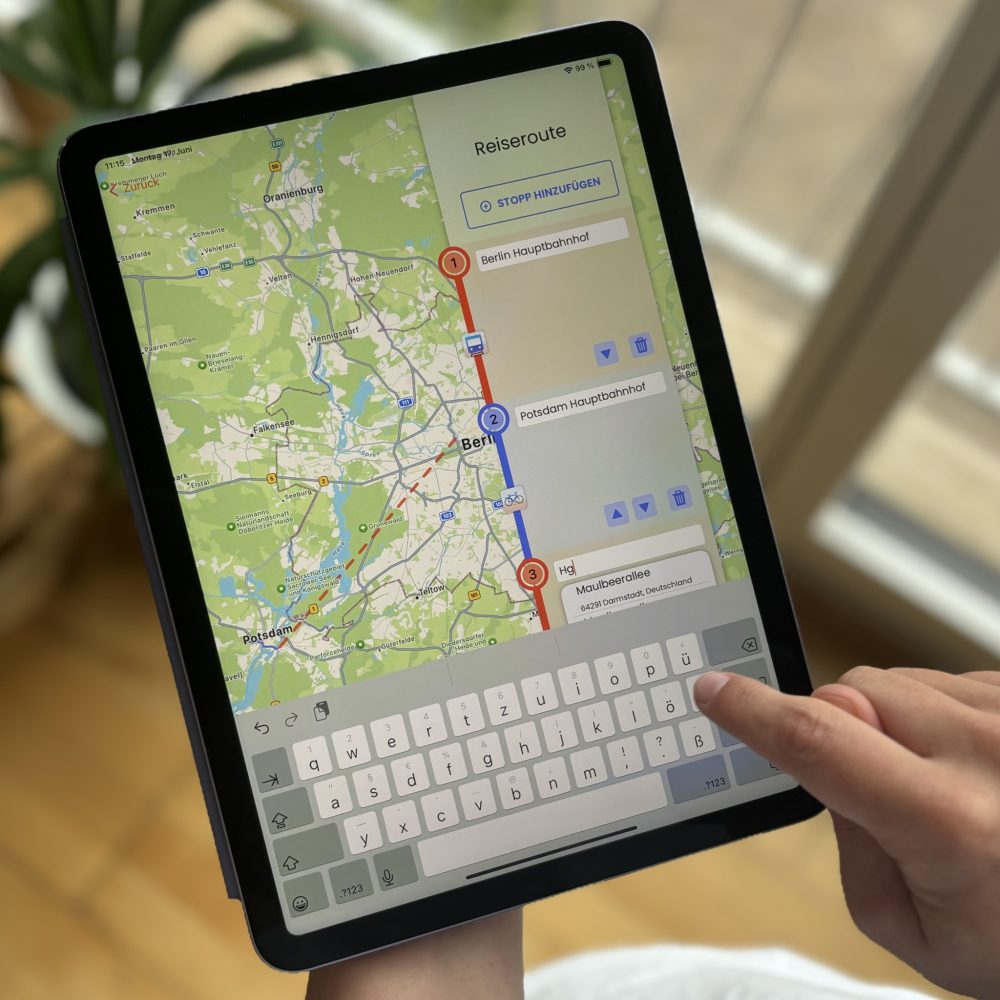Armed with a borrowed tent, a hastily stuffed rucksack and my weekend’s diet of crisps, snack bars, crackers and a few token vitamins in the form of dried fruit, I left my apartment for Berlin Südkreuz station. I was on my way to Melt Festival, located at the Ferropolis near Gräfenhainichen in Saxony-Anhalt. One S-Bahn, one regional train, another S-Bahn and one shuttle bus later, I’d arrived at the festival grounds.
Later in the evening, I recounted this journey to Hatim, a helping hand of the Crowd Impact team who was at Melt surveying how people arrived at the festival. He recorded my answers on his iPad, before showing me the climate impact of my journey. Based on the assumption that I’d use the same travel method for my return home after the festival, my round trip would be 278km and emit 16.7kg of CO2.
This data isn’t just useful for me to know; Melt will use all the data that Crowd Impact collects to calculate their overall CO2 emissions. When it comes to festivals and events, the biggest climate impact by far is the journey of attendees. (The exact figure is contested but, according to a report by A Greener Future, lies at 41 percent of all carbon emissions.) By providing in-depth data, Crowd Impact gives festivals insights into what information and solutions they can offer festival-goers to incentivise them to make a more climate-friendly journey. Meanwhile, the data Crowd Impact collects is also part of a larger research project, “ECO2CONCERT”, in which festival organisers and research institutions collaborate to analyse both mobility and energy emissions of festivals.


Crowd Impact screenshots
German infrastructure and a lack of festival supermarkets make attendees choose car travel
After finishing my survey with Hatim, I caught up with Crowd Impact Co-Founder Laura Kleber to ask how their work was going. It had been a tricky start: there had been a thunderstorm earlier that day that had stopped them from surveying, and they were trying to meet their target of surveying a certain number of attendees. “10 percent is gold, really, really good,” Kleber told me. “But my dream today is to get to eight percent.” Anything above five percent gives a usable data set that can provide valuable insights.
I asked Kleber what barriers there were that stopped people from choosing sustainable transport options. “It’s way more convenient to take a car,” she explained, “because people have so much stuff to carry. Especially if there’s no supermarket at the festival site, as they want to drink cheap beer at the festival [and don’t want to carry that by train].” She also pointed out that “German infrastructure is really lacking, especially in rural areas.” With festivals in rural areas, “you don’t always have good public transport connections, and when people come from rural areas themselves the only choice is to take the car.”
People travelled from far and wide to come to Melt
What I hadn’t realised before chatting to people at Melt was just how far people had come for the festival. A staple of the international techno scene—that’s now ending after 27 years—Melt attracts attendees from everywhere from Ireland to Israel. Crowd Impact Co-Founder Julian Vogels told me he’d surveyed a group of 13 people who had flown from Sydney to come to Melt. Later that night, I heard a hubbub of Australian accents and quickly turned around to ask the group whether they were the same people Vogels had surveyed. They seemed confused by my question of whether they were a specific group of Australians. “Mate, there’s so many Aussies here!” one of them barked. “Probably 10 percent of the festival.” I’d advise taking that statistic with a pinch of salt—but either way, that’s a hell of a lot of CO2 emissions for some techno.
Another misconception I had was that my journey by train was the most sustainable way to travel to Melt from Berlin. But Vogels explained to me that the Bassliner, a shuttle bus that transports people from Berlin’s main stations directly into the festival grounds, emits less CO2 than the combination of trains I took. “A percentage of regional trains are still diesel-based,” he pointed out. The S-Bahn also stops and starts frequently, using carbon each time it does so. Meanwhile, every seat on the Bassliner is usually occupied (I can attest to this, given they were all sold out when I optimistically tried to book a ticket on Friday morning). So while its engine is bigger than that of a car, the diesel it uses is split between around fifty people.
Crowd Impact has plenty of solutions to incentivise sustainable travel
Once Crowd Impact has provided a festival with data on their CO2 emissions, they can use this to set up measures that will incentivise people to travel more sustainably. As Kleber explained, a festival supermarket is a no-brainer. If the data shows that lots of people are arriving from one location, the festival can consider offering a shuttle bus from there to the festival grounds (though no matter how many attendees arrive from Sydney, a shuttle bus is hardly a solution for our friends from down-under). And if many people are travelling in cars with only one or two people in them, offering reduced parking costs for those with full cars would incentivise people to look for ride-shares.
While this can currently be done on Facebook or Telegram groups, Kleber points out that an event-focused ride-share platform would also make it more feasible for people to reduce their CO2 emissions by sharing cars. And while Crowd Impact has a blog post summarising their suggestions for climate-friendly incentives, they are planning to add automated suggestions to their app that will give festivals recommendations on what measures to put in place based on the data they’ve collected.
Kleber also adds that “communication plays a really big role in incentivising people to travel more sustainably.” Crowd Impact discovered that people who were informed about sustainable travel created 19 percent fewer emissions than those who weren’t. In collaboration with The Changency, Crowd Impact conducted a research project called Ticket To Ride which analysed 10 concerts from a German band. Their research revealed that when the band themselves asked their fans to travel to the gig sustainably, this had a big impact on reducing CO2 emissions. But, as Kleber points out, “It’s easier with a band than a festival because people have even more of an emotional bond with them.” Regardless, clear information about sustainability measures in all festival communications would surely help attendees make more climate-friendly choices.
Crowd Impact will continue supporting festivals in reducing CO2 emissions
Besides focusing on the journeys of attendees, festivals should also be expanding sustainable initiatives to other areas of festival organisation. DGTL in Amsterdam sets a positive example with its plant-based, waste-free food court, while Green Gathering in the UK is run on 100 percent renewable power.
As for Crowd Impact, the data they’ve collected for ECO2CONCERT will help the research project progress towards its end goal of “[building] a platform for festivals to help them improve their CO2 emissions and energy consumption.” In the meantime, their app will continue popping up wherever there’s a crowd, reducing the CO2 of festivals one survey at a time.









